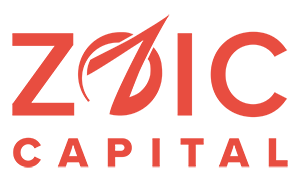| The Biweekly Deal Flow Update Issue #8 The Deal Flow Update is a publication to inform and educate those seeking diligence on healthcare innovation, deal flow and the trends in healthcare technology and diagnostics. For this issue I highly recommend the deep read on a controversial study on why individuals start their own companies. Summarized by Steve Blank, it describes a new theory on entrepreneurship written by Deepak Hegde and Justin Tumlinson, “Asymmetric Information and Entrepreneurship“. Please subscribe or share with others and always feel free to send us tips or comments. Thanks for reading and I hope everyone has an enjoyable weekend… -Neal -Zoic Capital |
| Five Deals For Friday Zoic believes the benefits of improved diagnostics are potentially revolutionary. Better and faster predictions of impending health problems will allow for earlier interventions, fewer invasive procedures, improved clinical outcomes (including fewer side effects), and lower healthcare costs. In addition to noninvasive diagnostics, therapies that have similar benefits are also an important target. •Another angle on molecular diagnostics that is seeing significant growth is companion diagnostics, i.e. tracking the progress of a therapy with a diagnostic. This is significant for pharmaceuticals especially in order to show progress. In addition, another important aspect is that diagnostics are not just useful for an initial diagnosis, but also to see if a condition is coming back. This is, of course, important for cases such as cancer and also for other chronic conditions. There is also a strong use case for diagnostics in determining if complications are going to occur after a surgery. •Machine learning is a term seen very often these days, whether it is in startup technology or as a potential buzzword. It is hard to deny, however, that the advancements in AI and machine learning have been substantial and the medical benefits can be very strong as machine learning can help in processing vast amounts of data on initial diagnosis. We have seen several very promising spectroscopic diagnostic systems that have, as a critical part of their analysis, a machine learning algorithm to differentiate between signal and noise, for example. Machine learning has been able to make practical long-held theoretically breakthrough techniques such as Raman or hyperspectral imaging. •Orthopedic care can still be surprisingly primitive, as most devices are improvements upon them are still reliant on hardware such as implants, and fixtures. Even adhesives can be little changed from those used decades ago. There are some recent advancements in new formulations that can offer substantial improvements in both initial treatment time and long-term strength. Interestingly, such formulations can also possibly be used for adhering soft tissue, with applications from emergency care to post-surgical incision closure. •We’ve talked about wound care previously, but not specifically about diabetes care. This is one of the largest growing areas in health care and with high awareness in the general population. Yet the solutions to managing diabetes are still quite varied and still in early stages. The solutions range from apps and software to track patient behavior and treatment which can involve some very significant players in the development of medical devices to support patient movement, prevent injury and even surgical procedures. •Robotic surgery has had a great deal of publicity and notice. However, the implementation of such technology for general use is still a ways away. One of the most significant barriers has been the perception that the value of these systems is still not yet proven. What can aid adoption are specific use cases in which the use of the device can quantitatively and decisively prove to result in better clinical results, rather than simply presented as a curiosity that rarely gets used. Newer and more specific studies are very helpful. What can also help are combining the device with, for example, instantaneous diagnostics that can automate the surgical process by incorporating real-time tissue scans. Articles Of Interest  •Steve Blank: The Unexpected Reason Why People Start Their Own Companies. A controversial study suggests that people become entrepreneurs because they realize they’re worth more than their resumes. •An AI that can predict cell structures – It could help us understand cancer and regenerative medicine. •10 Promising AI Applications in Health Care – An analysis suggests they could save the industry $150 billion by 2026. •Biology Will Be the Next Great Computing Platform •What It Takes to Think Deeply About Complex Problems – Three ways to embrace a more nuanced, spacious perspective. •DNA Sequencing As Preventative Care Is Ready For The Clinic •How Healthcare Disruption Will Help Retailers •When the human body is the biggest data platform, who will capture value? Life sciences companies must consider how and when to participate in emerging platforms of care. If you found this newsletter helpful or informative, I encourage you to forward it on. If you’ve received this from a friend, please subscribe to keep up with future issues. Thanks for reading and please send us any tips or comments! -Neal Connect With Zoic Capital |
| The Biweekly Deal Flow, curated by the team at Zoic Capital. |

Blog
Asymmetric Information and Entrepreneurship
© 2026 Zoic Capital.
Close Menu
Contact Us
113 Cherry St.
PMB 2981
Seattle, WA 98104-2205
E: hello [at] zoiccapital.com

